How to Fix Dell Laptop Won't Turn On | 2024 New💡
An unresponsive laptop can cause frustration and anxiety, disrupting both work and personal tasks. While encountering technical hiccups is possible, the key is understanding the troubleshooting process and addressing them adeptly. If you possess a Dell laptop and are experiencing frustration due to your device's reluctance to power up, find solace in the fact that you are not alone in dealing with such issues.
Qiling explores why your Dell laptop won't turn on. Additionally, it will furnish you with systematic solutions to bring your device back to life. Continue reading to empower yourself with the knowledge to bring your laptop back to functioning.
🚩Read Also: Surface Won't Turn On, Acer Laptop Won't Turn On Blue Light On
How to Fix Dell Laptop Won't Turn On
Before we go through the steps needed to resolve the Dell laptop won't turn on issue, gathering a few tools is essential to ensure a smooth process. To effectively navigate through the potential solutions, make sure you have the following at your disposal:
- A Secondary Computer or Smartphone
- Internet Connection
- Power Adapter and Cable
With these tools in your arsenal, we can now delve into the specific troubleshooting steps for the issue. Below are six ways to fix the Dell laptop won't turn on issue.
Way 1. Apply Boot Repair - Qiling Disk Master
In our arsenal of solutions, we first turn to the versatile Qiling Disk Master Professional, a robust tool renowned for its prowess in partition management and system optimization. Beyond its primary functions, this powerful utility offers a dedicated feature for resolving boot-related issues on Dell laptops. It empowers users to resolve problems preventing their Dell laptops from starting by efficiently repairing the boot sector.
Advantages of Qiling Disk Master
When compared to alternative methods, Qiling Disk Master stands out for:
- User-Friendly Interface: Its intuitive design ensures that novices and experienced users can easily navigate the tool.
- Comprehensive Functionality: Beyond boot repair, this tool offers a suite of features for complete system maintenance and optimization.
- Compatibility: Tailored to smoothly integrate with Dell laptops, addressing specific issues commonly encountered by users.
The following are the steps to apply boot-repair to fix the Dell laptop that won't turn on using Qiling Disk Master:
Step 1. Start Qiling Disk Master after connecting the external drive/USB to your computer, go to "Bootable Media," and click "Create bootable media."

Step 2. Select an available USB Drive or CD/DVD and click "Create." You can also burn the Windows ISO file to the storage media.

Step 3. Connect the created bootable drive to the new computer and reboot the computer by pressing and holding F2/Del to enter the BIOS. Then, set the WinPE bootable drive as the boot disk and press F10 to exit.
Step 4. Boot the computer again and enter the WinPE interface. Then, open Qiling Disk Master and click "Fix Boot" under the "Tools" page.
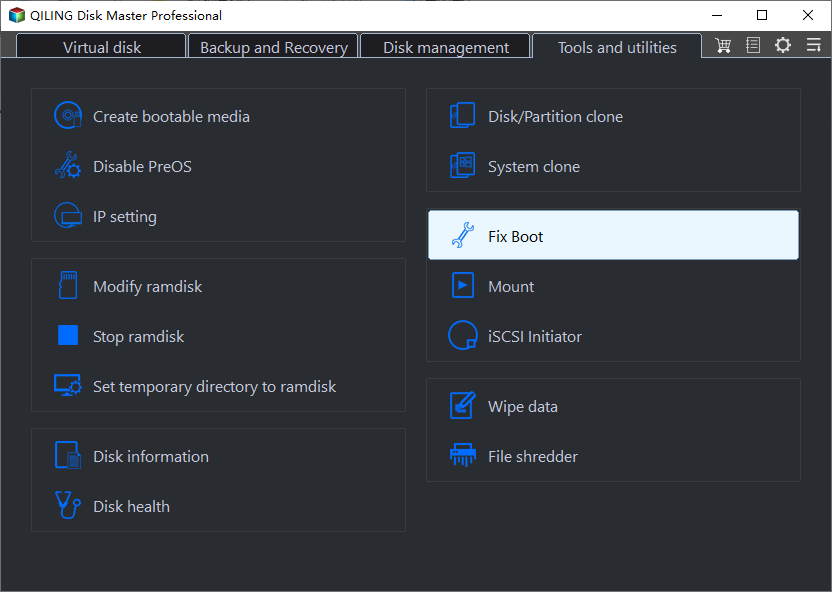
Step 5: Select the system you want to repair and click "Proceed".
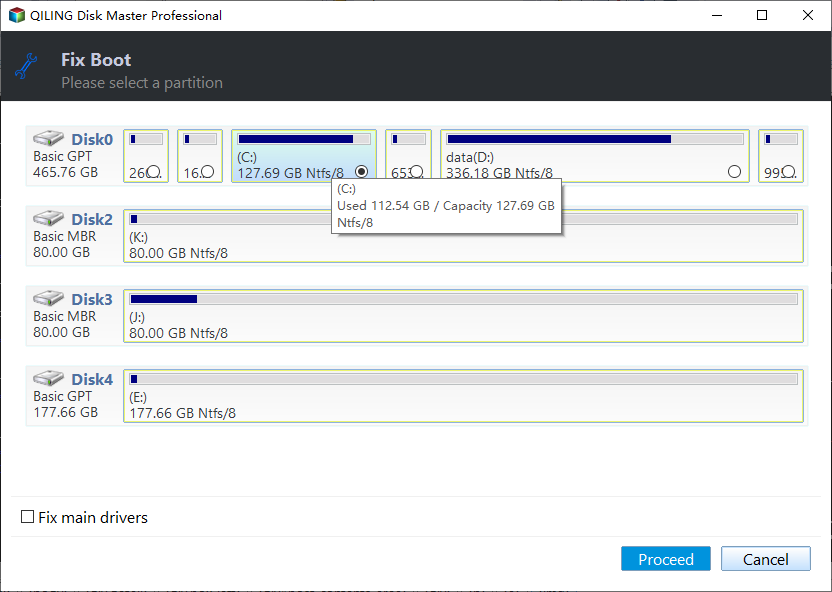
Step 6. Wait a moment, and you will receive an alert that the system has been successfully repaired. Click "OK" to complete the boot repair process.
Spread this helpful Dell laptop startup guideline online and post your feelings after solving this issue:
Way 2. Check the Power Supply
While software-related issues can often be the culprit behind a laptop's refusal to turn on, it's equally crucial to investigate the hardware components. You can start this by checking the power supply. Before diving into complex troubleshooting, perform a basic check on your Dell laptop's power infrastructure. Ensure the power adapter is firmly connected to the electrical outlet and the laptop.
Check for any indicator lights on your laptop. These lights can provide insights into the status of the power supply and overall system health. This preliminary step can unveil a straightforward solution, ensuring your device's swift and efficient revival. After you have checked the power supply and it is not at fault, proceed with the next solution.
To explore more details about the computer won't turn on problem, you can read this article :

Computer Won't Boot? Causes & Fixes for PC Not Turning On
You will see multiple computer/PC won't turn on issues in this article. And it will provide workable solutions for them.
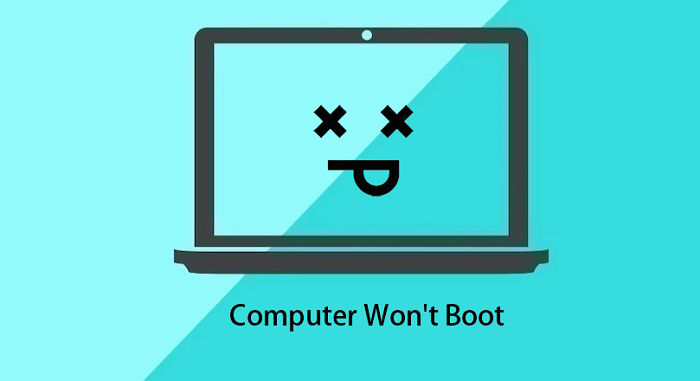
Way 3. Perform a Hard Reset
If your Dell laptop remains unresponsive despite checking the power supply, it's time to delve into a technique known as a hard reset. This procedure involves cutting off the laptop's power, clearing residual electrical charge, and initiating a fresh start. The hard reset is a fundamental yet powerful technique to troubleshoot unexplained startup issues. Now, follow the steps guided below to perform a hard reset quickly:
Step 1. You can begin by removing all types of devices connected to your system. Remove all USBs, cables, chargers, and even batteries if possible.
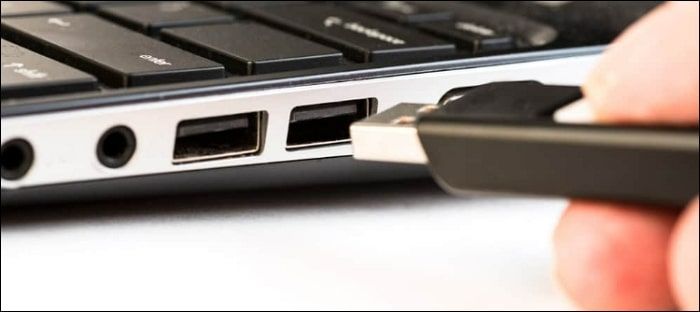
Step 2. Once you have removed everything, press and hold the "Power" button for 20 seconds. After 20 seconds, release the button, reconnect all essential accessories, and reboot your Dell laptop.
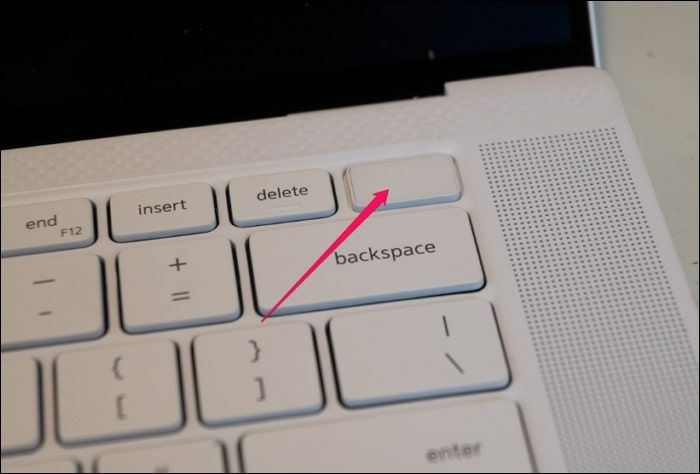
This solution can also applied to the following problem. Read and learn the full guide:
Way 4. Run the Dell Hardware Diagnostic Tool
Dell understands the importance of comprehensive diagnostics, and they've equipped their laptops with a powerful tool to scrutinize every hardware component. The Dell Hardware Diagnostic Tool is an invaluable resource that can identify and pinpoint potential issues within your laptop's internal workings. Follow the steps below to leverage this tool for a meticulous hardware check and fix the Dell laptop that won't turn on issue:
Step 1. Reboot your Dell laptop and repeatedly press the "F12" key. Once you can access BIOS settings, move to the "Diagnostic" section with the arrow keys.

Step 2. In the Dell Diagnostic menu, select "Full System" and tap "Start" to run a comprehensive hardware scan. This process may take some time as it rigorously examines your laptop's components.
Way 5. Boot into Safe Mode and Run Antivirus Utility
If your Dell laptop exhibits signs of erratic behavior or failure to start, it is crucial to consider the possibility of a malicious software intrusion. Booting into Safe Mode and running a robust antivirus utility can help safeguard your system by identifying and eliminating potential threats. This dual-layered approach can serve as a formidable defense. Here is how to boot your Dell laptop into Safe Mode and run the antivirus utility:
Step 1. Turn on your Dell laptop while holding the "Shift" key. This action will grant you entry to the Advanced Startup Options, where you'll encounter a blue screen displaying the prompt "Choose an Option."
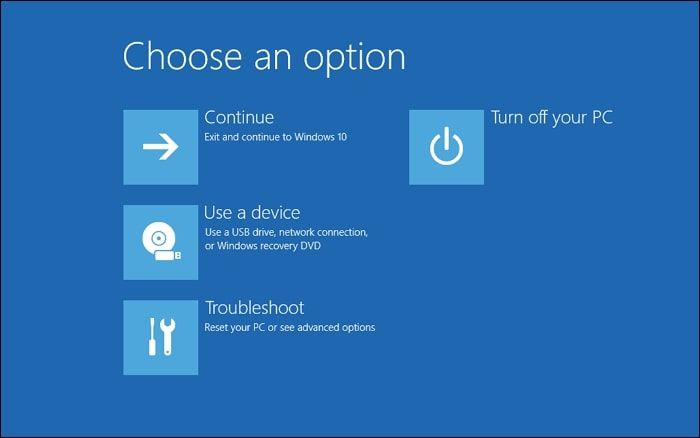
Step 2. Here, choose "Troubleshoot," followed by "Advanced options." Select "Startup Settings" and click "Restart." Your computer will go through a restart process. Upon the screen's return, various options will be presented. Press 4 to initiate Safe Mode or 5 to enter Safe Mode with internet access.

Step 3. Now, open the antivirus program and update its virus definitions to ensure the latest protection. Initiate a comprehensive or complete system scan using your antivirus utility. This option scans all files and processes on your laptop, rooting out potential threats.
Way 6. Change the Hard Drive and Reinstall Windows
When all else fails, and persistent issues plague your Dell laptop's performance, it might be time to consider a more drastic yet apllicable solution. That is replacing the hard drive on the Dell laptop and reinstalling Windows. This approach addresses potential hardware failures and provides a clean slate for a fresh installation of the operating system. A new installation of Windows eliminates all corrupted system files or software issues.
Upgrading to a new hard drive can result in faster read/write speeds, enhancing overall system performance. Consider changing the hard drive and reinstalling Windows as a comprehensive solution to persistent issues with your Dell laptop. This approach addresses potential hardware concerns and provides a fresh platform for optimal performance.
You may also interested in the related posts below. Click and find more details:
Why Dell Laptop Won't Turn On
When your reliable Dell laptop doesn't turn on, it makes us wonder: What's stopping it from starting up? To find out, we need to look into different possibilities, each requiring its investigation:
- AC Power Adapter Problems or Battery Issues
The first thing we need to look at is your laptop's power supply. Whether it's an old AC power adapter or a faltering battery, disruptions in the power supply can render your Dell laptop unresponsive. A closer inspection of these elements might reveal the key to fixing your Dell laptop.
- Corrupted Windows System or Boot Files
As we explore further, we find that software and hardware work together like a complicated dance. If your Windows system or boot files get messed up, it can cause problems when your laptop starts up, messing up how it's supposed to run smoothly. In this situation, fixing the software carefully might be the solution to getting everything working smoothly again.
- Damaged Hardware
As we navigate the underlying issues, we cannot overlook the possibility of defective components within the laptop's hardware. A damaged hard drive or malfunctioning RAM may silently affect your Dell laptop's performance.
- Virus or Malware Infection
Nowadays, unseen viruses can infiltrate even the most secure systems. A virus or malware infection may be disrupting your laptop's vital functions, rendering it unable to boot up. Detecting and removing this digital malware could be crucial to fixing your Dell device.
- BIOS Setting Problems
We encounter the BIOS system settings deeper into the laptop's core. Misconfigurations or glitches in the BIOS settings can lead to system issues, affecting your laptop's ability to boot.
Conclusion
To conclude, we explored a step-by-step guide to determine why your Dell laptop won't turn on. The article looked into power supply issues, checked hardware and software, and suggested tools for troubleshooting. It went through different methods, like checking the power supply and using the Dell Hardware Diagnostic Tool. We explained the importance of a hard reset, going into Safe Mode, changing the hard drive, and reinstalling Windows.
One tool that stood out during these troubleshooting methods is Qiling Disk Master. This tool helps with boot repair and offers features for managing partitions, data recovery, and more. In short, it is a perfect tool for Dell laptop users. Use Qiling Disk Master to revive your Dell laptop. It has an easy-to-use interface and a lot of functions and works well with Dell laptops.
FAQs About Dell Laptop Won't Turn On
Navigating the complexities of troubleshooting a non-responsive Dell laptop can be difficult. To shed light on common concerns, we've compiled answers to frequently asked questions below:
1. How do you fix the Dell laptop black screen issue?
You can apply a hard reset using the following steps to fix the Dell laptop's black screen issue:
Step 1. Shut down your Dell laptop and remove all the accessories attached to it. These include all cables, chargers, keyboard or mouse, and, if possible, even the battery.
Step 2. Hold the Power key for 30 seconds to dissipate all the lingering power from the system. Afterward, reattach the battery or power cable to reboot the computer and check if the black screen issue is gone.
For more reliable solutions, continue to read the following post:
Read More: How to Fix Dell Laptop Black Screen
2. What do I do if my Dell laptop won't boot but the power light is on?
When the power light is on, but your Dell laptop won't boot, it indicates a potential issue with the internal components. Begin by verifying the power supply, executing a hard reset, and utilizing the Dell Hardware Diagnostic Tool to pinpoint potential hardware issues. If the issue persists, contemplate swapping out the hard drive and reinstalling Windows for a thorough resolution.
3. How do you force a Dell laptop to charge?
If your Dell laptop is not charging, you can try the following steps:
Step 1. Verify that both the power adapter and cable are in proper working order. However, ensure the power outlet works by testing it with another device hassle-freely.
Step 2. Remove the power source and the battery (if applicable) of laptop, hold down the power button for 15 seconds, reinstall the battery, and reconnect the power adapter. Check for any BIOS updates on the Dell support website related to charging issues.
Related Articles
- What Is Dell Default Admin Password & How to Reset It
- Can't Merge USB Partitions? 2 Proven Fixes Here
- Best Solutions on How To Fix Adobe Acrobat Error 0 104
- How Do I Convert NTFS to FAT32 in Windows 11 [2024 New Guide]